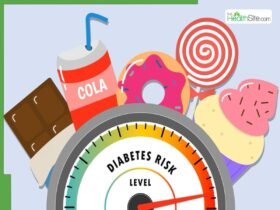Though Desiree (Des) Linden is a two-time Olympic marathoner, competing in the 2012 and 2016 Olympics, she might be most known for her steely 2018 Boston Marathon win. It was a lauded feat for two reasons: Linden was the first American woman to win since 1985 (and no American woman has won since), and the weather conditions that April day were remarkably bad—wind, rain, and temps in the upper 30s. It was the first time Linden’s trademark resilience and grit was on full display.
The six years since that win have not gone on quietly, though. The 41-year-old runner consistently shows up on the starting line of the world’s biggest marathons healthy and ready to compete. Currently, she’s training for her fifth showing at the New York City Marathon on November 3.
How has Linden remained a strong competitor for all this time? She’s kept herself open to change, ready to adapt to the challenge ahead. In training, that starts with her morning routine.
“Flexibility is the name of my morning game. That’s something I learned early on in my running career in college and I’ve been doing this for a long time now,” Linden says. “I could be racing in Japan or in Europe or in Savannah, and I’ll be able to figure out what I need.”
Linden typically runs one marathon in the spring (usually the Boston Marathon) and one in the fall, with half marathons sprinkled in during training.
“My morning routine changes depending on the time of the year and what I’m training for, but generally, I’m always prioritizing sleep,” she says. “Most of the year, I don’t set an alarm and wake up when my body tells me to—that’s one of the perks of being a pro runner.”
When she’s getting closer to a race, though, she’ll start to dial in her wake-up time. We caught up with Linden to find out how else her morning routine shifts during training.
First thing: fuel
I’ve never really been a morning person—I’m not an evening person either, more of an afternoon person—but I start to become a morning person as I approach a race, getting a little bit more structured. I’ll have an alarm set and make sure I fuel right away, getting a good sized meal, usually toast or a bagel. I like to get something to have my stomach ready to go run that doesn’t feel too heavy. I drink my black coffee and mentally prepare for the day. Then I let my stomach settle before going out, that way I can get the most out of my run, whether it’s just a recovery run or a workout.
Race days get specific
Once it gets closer to the race, I dial in further, practicing for race day. Say if I were running the Every Woman’s Marathon this November, I would see that it starts at 7 a.m. and they’ll have Gu liquid gels and Mortal Hydration on the course, so I would start to implement those into my routine. I’ve run marathons in the past, like Olympic Trials, that start around 11 a.m. or 12 p.m. so I’d adjust to a later morning and make sure I’m acclimated to the time zone I’ll be in.
No matter what, caffeine and ketones are clutch
After I run, I’ll have another cup of coffee. I like to mix it up with adding milk or making a latte or cappuccino. My husband and I have our own coffee brand, Linden x Two. Occasionally we’ll have some of our product around that I can taste and sample during my morning routine.
I’m not a stickler for specific brands, because I’ve found flexibility is key to adapting to different race scenarios. That being said, you won’t find me missing my morning caffeine and I’ve become a fan of Ketone-IQ, a ketone supplement that simulates ketosis. Ketosis is a metabolic state that taps into fat as a fuel source. It provides a little mental clarity and makes me feel a little bit more satiated before going out. Having that in the morning is great.
Post-race is for recovery—and beer
The thing I really try to focus on is being an athlete for an extra hour after finishing the race. It’s hard to not get too excited, going straight to the celebration, but your body will thank you if you take just a little bit more time to settle. I make sure to get in a good protein drink. If they have chocolate milk at the finish line, that’s an easy thing to grab and usually tastes good after having all the gels and sticky stuff on the course. Then I’ll do a massage or an ice bath. If you can rally one more time to do something hard, those go a really long way in helping actual recovery.
And then once I’ve done those things, I go out and get a burger, fries, beer, spicy food, all the things I wouldn’t want to eat the day before. And I’m strategic when it comes to drinking. The goal is not to end your night too early. I’ll start with something light and low on ABV until my stomach is full. Then I’ll mess around with a Sculpin or a heartier IPA.
Our editors independently select these products. Making a purchase through our links may earn Well+Good a commission.













Leave a Reply